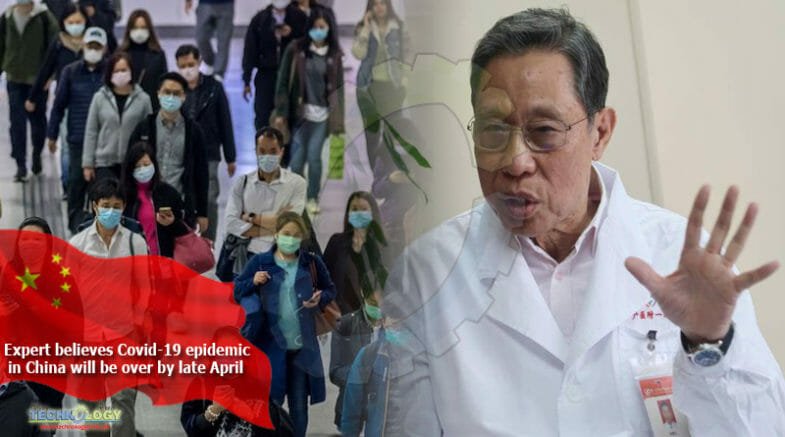Chinese respiratory expert said he believes the novel coronavirus pneumonia epidemic will basically be brought under control on the Chinese mainland by the end of April.

“That indicates people will be able to return to their normal work and companies resume normal operations and production by the end of April,” Zhong Nanshan, an academician at the Chinese Academy of Engineering, said at a news conference in Guangzhou, capital of Guangdong province, on Thursday (Feb 27) morning.
Previously, many countries and organisations had predicted that the outbreak in China would not be brought under control until the end of May, Zhong said.
Zhong’s confidence is based on the great importance the central government has paid to fighting the epidemic, China’s well-functioning system and its growing comprehensive strength.
According to authorities, many provinces, regions and municipalities have been reporting no new confirmed cases for several days in a row.
Zhong said he was happy to learn from media that Huoshenshan and Leishenshan hospitals in Wuhan, the epicentre of the outbreak, now already have some empty beds.
“In addition to offering effective treatment for patients in serious condition, great efforts should be made to diagnose suspected cases and distinguish between Covid-19 and common flu patients to prevent more infections between people on the mainland in the following months, Zhong said.
But he said the fast-growing number of confirmed cases outside China is an unpredictable variable.
Zhong said he could not accurately forecast the development of the epidemic in other countries and regions as the number of confirmed cases reported in foreign countries and regions has now surpassed the figure reported on the mainland.
Zhong said he does not think China will see a large increase in confirmed cases in the coming months after effective and concrete measures were introduced to prevent and control the outbreak, even when many migrant workers from around the mainland are still travelling across provinces to return to work.
Zhong added that though the first case of novel coronavirus pneumonia was reported in China, its source may not come from the country.
Zhong also said that the novel coronavirus has a prominent feature whereby patients have a large amount of very sticky mucus in their small airways.
Obstruction of the airway can lead to secondary infections, said Zhong.
“We are working to solve the problem,” he said.
The mortality rate among critically ill patients in Wuhan, the epicentre of the outbreak, is close to 60 per cent, Zhong said, adding that experts are searching for solutions to hypoxia, and some new methods have proved effective in relieving breathing difficulties of patients in Wuhan.
Addressing the question that some patients discharged from hospital after initial recovery have tested positive for the coronavirus for a second time, Zhong said Covid-19 is a new infectious disease, the process of which is not known yet.
“We can’t draw an absolute conclusion at present and have to follow its development closely. But according to the laws of microorganisms, those with enough antibodies will not be infected again,” Zhong said.
He urged expansion of international cooperation in the fight against infectious disease in the weeks to come.
Zhong said he has been invited by European countries to give a video address to his European counterparts over the weekend to explain China’s current situation and solid experience in fighting the epidemic.
Other countries may be inspired by China’s experiences, he said.
In addition to early discovery, detection and isolation, large cities should build designated hospitals to focus on treating novel coronavirus pneumonia patients because comprehensive hospitals would have to spend a lot of manpower and material resources when they receive such patients, Zhong said.
Seeking expanded international cooperation is a big part of the fight against the epidemic, he said. – Xinhua/China Daily/Asia News Network
